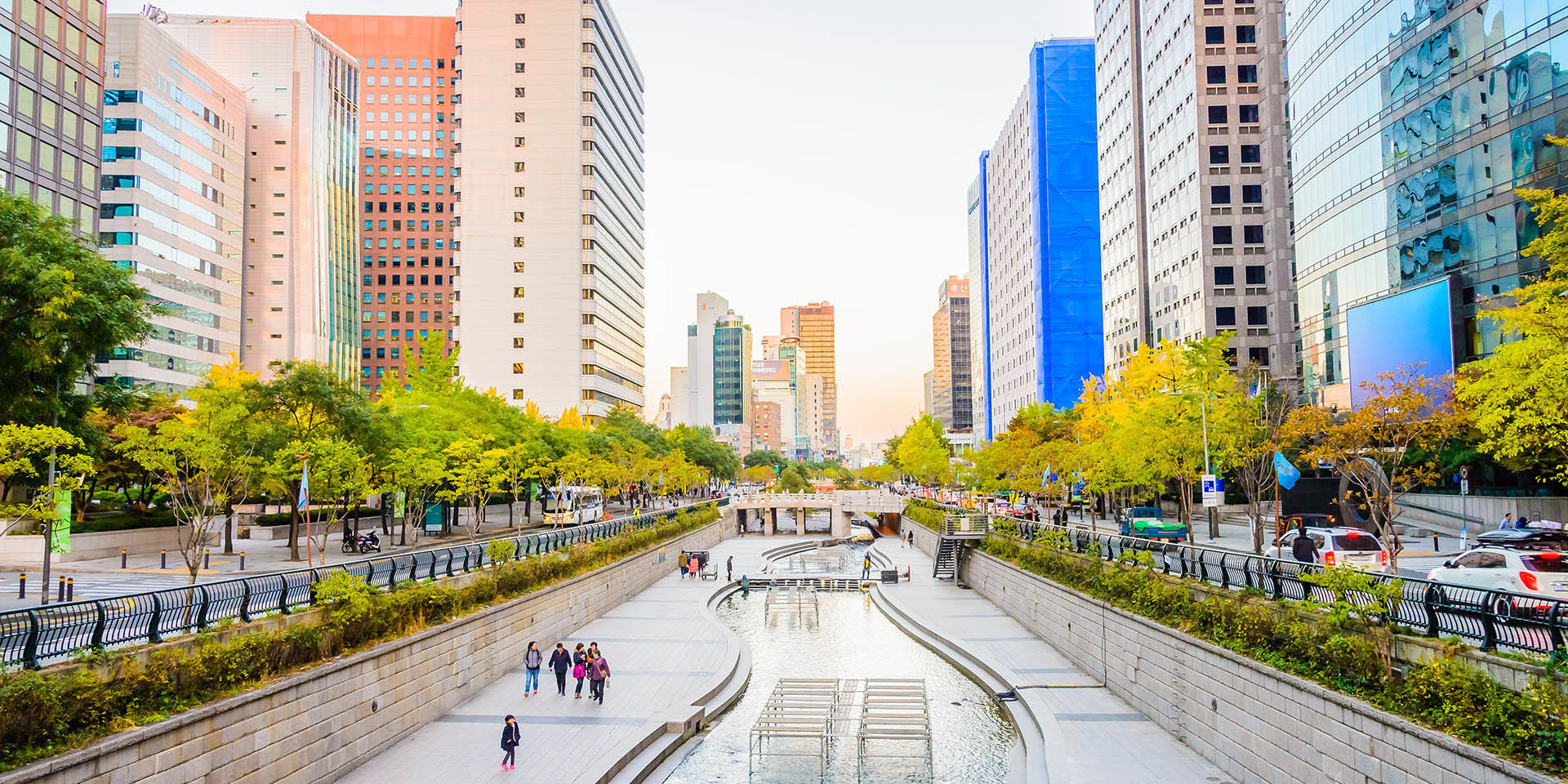Author | Diana Pardo
Until recently, cities across the world were built without taking into account elements such as acoustic pollution, levels of CO2 emissions, air pollution or areas designed for green zones. However, today, these are priority factors for the wellbeing of citizens and the protection of the environment. Not just that: they now form an indelible part of complete urban planning strategies.
What makes a city green?
Green cities are those that have plenty of natural spaces designed to improve the wellbeing and health of their inhabitants, they have low levels of environmental pollution and greenhouse gases, they promote eco-friendly and sustainable building practices and their citizens are educated and act in accordance with pro-environmental criteria.
However, not all cities benefit from being located in areas that can accommodate vegetation or public parks. In this case, the aim is to preserve resources that may be extremely scarce. It is about protecting what one has.
C40 Cities: Climate Leadership Group

The C40 is made up of a group of over 90 international cities, bringing together over 650 million citizens aiming to join forces and reduce greenhouse gas emissions and adapt to the impact of climate change. The members of this group are convinced that climate change is the biggest challenge our species will face this century and over 70% of the member cities have managed to apply initiatives to combat this circumstance.
The 2017 Summit, which was held in Chicago, also served to announce the list of the 10 most sustainable cities in the world. The first five are as follows:
1- Copenhagen
The Danish capital dominates the top of the ranking. More than half of the city’s inhabitants use a bicycle as their normal form of transport. It has over 2,220 hectares of green areas with public access. It is currently committed to achieving another goal: becoming the first carbon emissions-free city by 2025.
2- Chicago
Chicago has firmly committed to energy efficiency and clean energies. It has established a strategy to reduce greenhouse gas emissions and save costs for residents and local businesses.
3-Dar Es Salaam
This is the most populated city in Tanzania. It focuses its efforts on combating environmental pollution produced by classic transport elements. To do so it has created a rapid transit bus system, which incorporates new low-carbon engines and transports more than 200,000 passengers a day.
4- New York
New York is the most populated city in the USA and one of the most inhabited in the world, therefore it is also committed to sustainable transport. It has a programme called South Bronx Clean Truck, which promotes the purchase of low-carbon vehicles and replaces old ones with the aim of reducing air pollution.
5- Auckland
The largest and most populated city in New Zealand. It has implemented Auckland’s Waste to Resources initiative, which focuses on waste management by developing measures to recover and recycle 65% of the waste collected in containers.
After these, the ranking continues with Phoenix, Mexico City, Fort Collins, Wuhan and Washington DC. Their initiatives are available here.
More cities keep pushing for a better world

The C40 2019 was held in October 2019 in the city that dominates the ranking. And while all the cities on the list comply with their solid commitments in the area of climate, new incorporations were made.
6- London
Europe’s leading megacity has taken a number of steps in order to reduce its carbon footprint, but also noxious NO2 emissions. Chief among them is the Ultra Low Emission Zone, a large area covering Central London in which vehicles are required to meet Euro emissions standards all year round. Otherwise, a fare must be paid.
7- Accra
The capital of Ghana is pushing to solve its monumental waste collection issues by integrating informal waste pickers with public services, but also closing illegal open waste grounds. As a result, Accra has increased waste collection from 28% to 48% over two years; a true achievement that will increase the quality of life of its 2,2 million citizens.
8- Medellin
Medellin’s green belts have become one of the most successful urban policies in Latin America. By connecting different parts of the city through a network of greenery, escalators and gondolas, the second-largest city in Colombia is increasing biodiversity, cutting down pollution and reducing the heat island effect.
9- Kolkata
India’s issues with traffic and pollution are well known, and Kolkata is fighting them by pushing for better public transportation. The city aims to run 5,000 electric buses by 2030, while ferries crossing the Ganges river are to be electrified.
10- San Francisco
One of the most densely populated cities in the United States, San Francisco is allowing its residents and businesses to purchase electricity from low-carbon sources through the CleanPowerSF program. This is part of a bigger plan to run fully on renewable energy by 2030.
11- Seoul
South Korea’s capital is one of the world’s most innovative smart cities and is currently engaged in a number of initiatives pushing to make it greener and more sustainable. One of them is the Solar City Seoul project, which aims to deploy solar panels to 1 million households in order to achieve 1 GW of installed solar PV.
12- Guangzhou
The city of Guangzhou has been massively improving its public transportation, converting its entire fleet of more than 11,000 buses into a fully electric one. In order to do so, the municipality also had to install 4,000 charging stations and make substantial changes to the city grid, one of the world’s largest.
The trend towards greener cities will benefit all of us economically since both parks and gardens are considered high-value assets that contribute to the reduction of healthcare costs, they help reduce air temperature and they increase the value of land and energy efficiency.
Images | Dimitris Vetsikas






















































